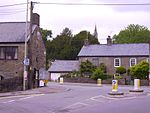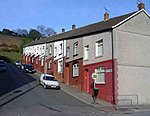A473 road

The A473 is a main road linking Pontypridd with Bridgend in Wales. The route begins in Upper Boat just south of Pontypridd, at the junction with the A470 and A4054 roads. It crosses the bridge in an easterly direction and continues along the road until it reaches the hill known locally as Power Station hill until it reaches a roundabout near the village of Tonteg after which it heads in a south westerly direction. The road continues along the stretch of road bypassing the villages of Church Village, Llantwit Fardre, Beddau and Llantrisant. After Llantrisant, the road heads in a westerly direction through Llanharan and then turns to a south westerly direction through Pencoed. The road enters Bridgend from the south and passes through the town centre before terminating at the junction with the A48 at Laleston to the west of Bridgend.
Excerpt from the Wikipedia article A473 road (License: CC BY-SA 3.0, Authors, Images).A473 road
A473,
Geographical coordinates (GPS) Address Nearby Places Show on map
Geographical coordinates (GPS)
| Latitude | Longitude |
|---|---|
| N 51.53542 ° | E -3.41812 ° |
Address
A473
CF72 9NH , Llanharan
Wales, United Kingdom
Open on Google Maps









